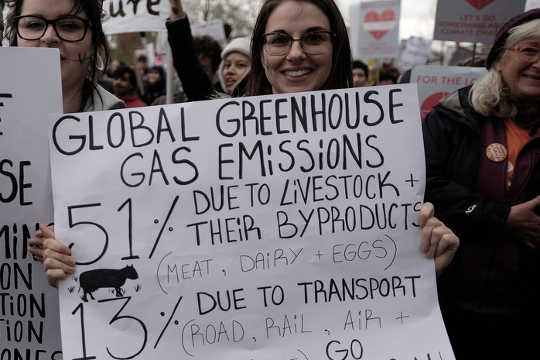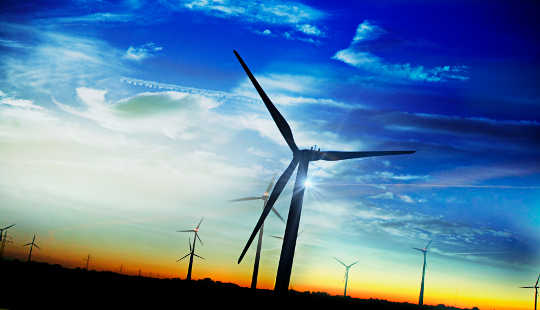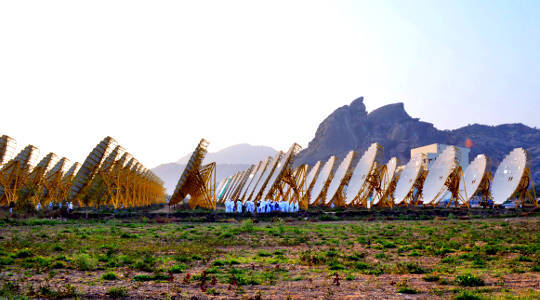 In some political circles, hostility to climate policy has become a way of showing off one’s conservative credentials. But a suggestion for pricing carbon, grounded in classic conservative principles, has now emerged in the United States.
In some political circles, hostility to climate policy has become a way of showing off one’s conservative credentials. But a suggestion for pricing carbon, grounded in classic conservative principles, has now emerged in the United States.
 A group of former Republican officials (including James A. Baker, Henry Paulson, George P. Shultz, Marty Feldstein and Greg Mankiw) is proposing a carbon tax starting the tax at $40 per ton, that would gradually increase.
A group of former Republican officials (including James A. Baker, Henry Paulson, George P. Shultz, Marty Feldstein and Greg Mankiw) is proposing a carbon tax starting the tax at $40 per ton, that would gradually increase.
 After opposing a Washington state carbon tax in November, climate justice advocates are setting the stage for a more thorough initiative to address both climate change and inequality.
After opposing a Washington state carbon tax in November, climate justice advocates are setting the stage for a more thorough initiative to address both climate change and inequality.
 Some commentators seem to be worried that our electricity networks are facing an impending voltage crisis, citing fears that renewables (rooftop solar panels in particular) will threaten the quality of our power supply.
Some commentators seem to be worried that our electricity networks are facing an impending voltage crisis, citing fears that renewables (rooftop solar panels in particular) will threaten the quality of our power supply.
 Following a campaign by the coal industry, Prime Minister Malcolm Turnbull has argued for new coal-fired power stations in Australia. But these plants would be more expensive than renewables and carry a huge liability through the carbon emissions they produce.
Following a campaign by the coal industry, Prime Minister Malcolm Turnbull has argued for new coal-fired power stations in Australia. But these plants would be more expensive than renewables and carry a huge liability through the carbon emissions they produce.
 Last year we found that the growth in global fossil fuel emissions have stalled over the past three years.
Last year we found that the growth in global fossil fuel emissions have stalled over the past three years.
 There is huge potential for using electric vehicles to tackle climate change, give us cleaner air and grow the green economy.
There is huge potential for using electric vehicles to tackle climate change, give us cleaner air and grow the green economy.
 Forget about oil or gas – you should be worrying about the less discussed but far more concerning fact that the world is running out of clean, drinkable water.
Forget about oil or gas – you should be worrying about the less discussed but far more concerning fact that the world is running out of clean, drinkable water.
 A major opportunity for avoiding climate change’s worst impacts lies in reducing methane emissions, particularly from food production, according to a pair of new studies.
A major opportunity for avoiding climate change’s worst impacts lies in reducing methane emissions, particularly from food production, according to a pair of new studies.
 Gene Takle, professor of agronomy and geological and atmospheric sciences at Iowa State University, says tall wind turbines disbursed throughout a field create air turbulence that may help plants by affecting variables such as temperature and carbon dioxide concentrations.
Gene Takle, professor of agronomy and geological and atmospheric sciences at Iowa State University, says tall wind turbines disbursed throughout a field create air turbulence that may help plants by affecting variables such as temperature and carbon dioxide concentrations.
 Methane concentrations in the atmosphere are growing faster than any time in the past 20 years. The increase is largely driven by the growth in food production, according to the Global Methane Budget released today.
Methane concentrations in the atmosphere are growing faster than any time in the past 20 years. The increase is largely driven by the growth in food production, according to the Global Methane Budget released today.
 Detroit-area resident Shamayim Harris bought more than 10 properties on her block. She’s now converting them into sustainable community spaces for education, wellness, and economic development.
Detroit-area resident Shamayim Harris bought more than 10 properties on her block. She’s now converting them into sustainable community spaces for education, wellness, and economic development.
 While much of the media focus at this month’s climate meeting in Marrakech (COP22) was on US President-elect Donald Trump, there were signs that several countries have begun the long-term planning needed to avoid dangerous climate change.
While much of the media focus at this month’s climate meeting in Marrakech (COP22) was on US President-elect Donald Trump, there were signs that several countries have begun the long-term planning needed to avoid dangerous climate change.
 It seems almost certain that US President-elect Donald Trump will walk away from the Paris climate agreement next year. In the absence of US leadership, the question is: who will step up?
It seems almost certain that US President-elect Donald Trump will walk away from the Paris climate agreement next year. In the absence of US leadership, the question is: who will step up?
 The Paris climate agreement has now officially come into force. Although Donald Trump and other climate change deniers have vowed to abandon it, most have hailed the agreement as a huge success and a significant milestone in our quest to limit the effects of global climate change.
The Paris climate agreement has now officially come into force. Although Donald Trump and other climate change deniers have vowed to abandon it, most have hailed the agreement as a huge success and a significant milestone in our quest to limit the effects of global climate change.
 The election of Donald Trump as president of the United States is bad news for the global environment. He has made it clear that he will not implement the steps required to meet the pledges to reduce emissions as part of the agreement reached in Paris at the end of 2015.
The election of Donald Trump as president of the United States is bad news for the global environment. He has made it clear that he will not implement the steps required to meet the pledges to reduce emissions as part of the agreement reached in Paris at the end of 2015.
 Since the 1980s, air pollution has increased worldwide, but it has increased at a much faster pace in regions close to the equator.
Since the 1980s, air pollution has increased worldwide, but it has increased at a much faster pace in regions close to the equator.
 Iceland is about to tap into water as hot as lava. Several kilometres below ground, a drilling rig named Thor will soon penetrate the area around a magma chamber, where molten rock from the inner Earth heats up water that has seeped through the seafloor.
Iceland is about to tap into water as hot as lava. Several kilometres below ground, a drilling rig named Thor will soon penetrate the area around a magma chamber, where molten rock from the inner Earth heats up water that has seeped through the seafloor.
 Solar power in India will be cheaper than imported coal by 2020, but replacing the subcontinent’s fossil fuels with renewable energy is an enormous task.
Solar power in India will be cheaper than imported coal by 2020, but replacing the subcontinent’s fossil fuels with renewable energy is an enormous task.
 The pre-industrial atmosphere contained more particles, and so brighter clouds, than we previously thought. This is the latest finding of the CLOUD experiment, a collaboration between around 80 scientists at the CERN particle physics lab near Geneva.
The pre-industrial atmosphere contained more particles, and so brighter clouds, than we previously thought. This is the latest finding of the CLOUD experiment, a collaboration between around 80 scientists at the CERN particle physics lab near Geneva.
 Ever since the 1973 oil embargo, U.S. energy policy has sought to replace petroleum-based transportation fuels with alternatives. One prominent option is using biofuels, such as ethanol in place of gasoline and biodiesel instead of ordinary diesel.
Ever since the 1973 oil embargo, U.S. energy policy has sought to replace petroleum-based transportation fuels with alternatives. One prominent option is using biofuels, such as ethanol in place of gasoline and biodiesel instead of ordinary diesel.
 The far-reaching Paris Agreement on tackling climate change is close to taking effect ? but how just how effective it may prove is far from clear.
The far-reaching Paris Agreement on tackling climate change is close to taking effect ? but how just how effective it may prove is far from clear.
 Just as people pump greenhouse gases into the atmosphere by burning fossil fuels, the land also absorbs some of those emissions.
Just as people pump greenhouse gases into the atmosphere by burning fossil fuels, the land also absorbs some of those emissions.















